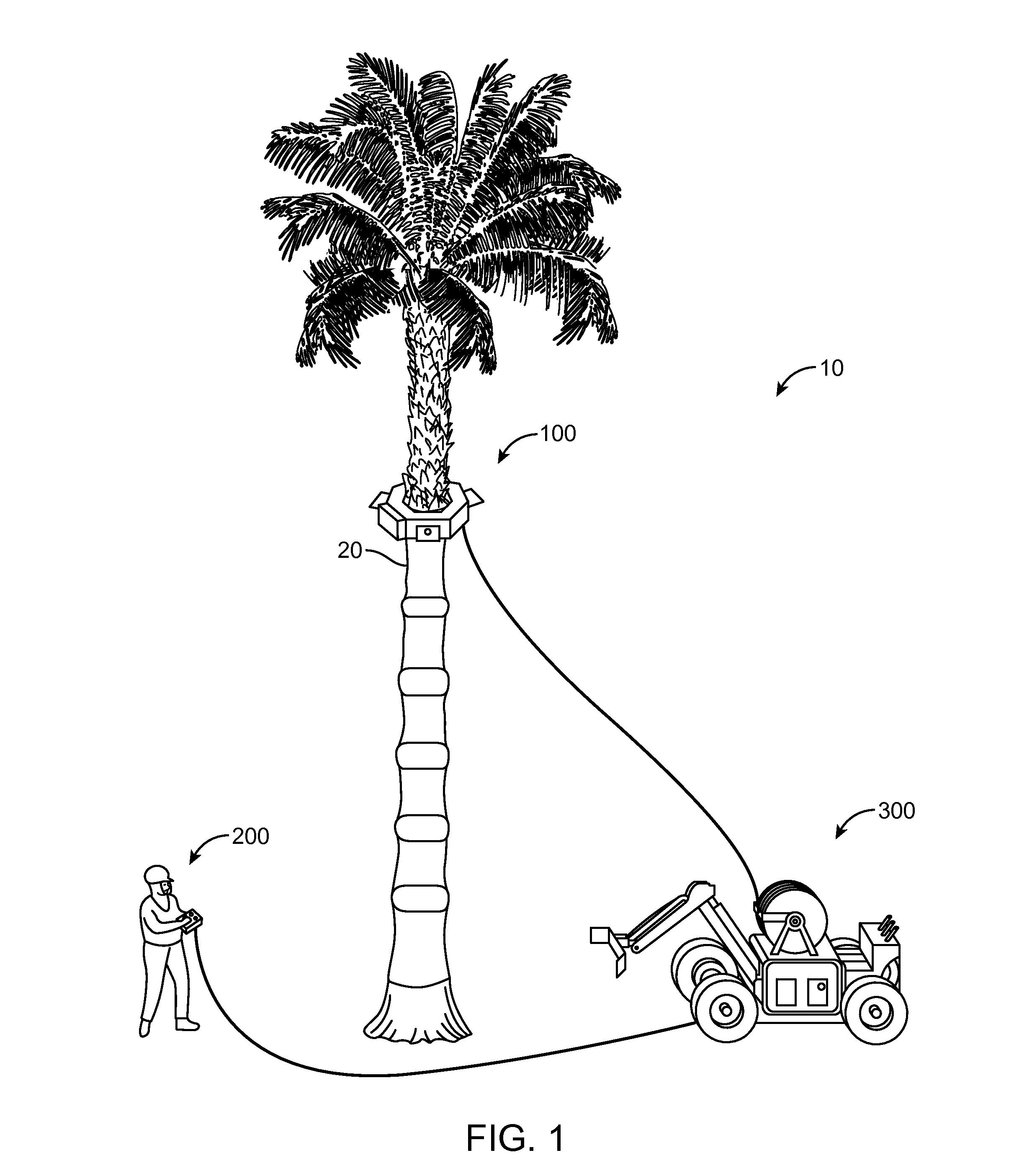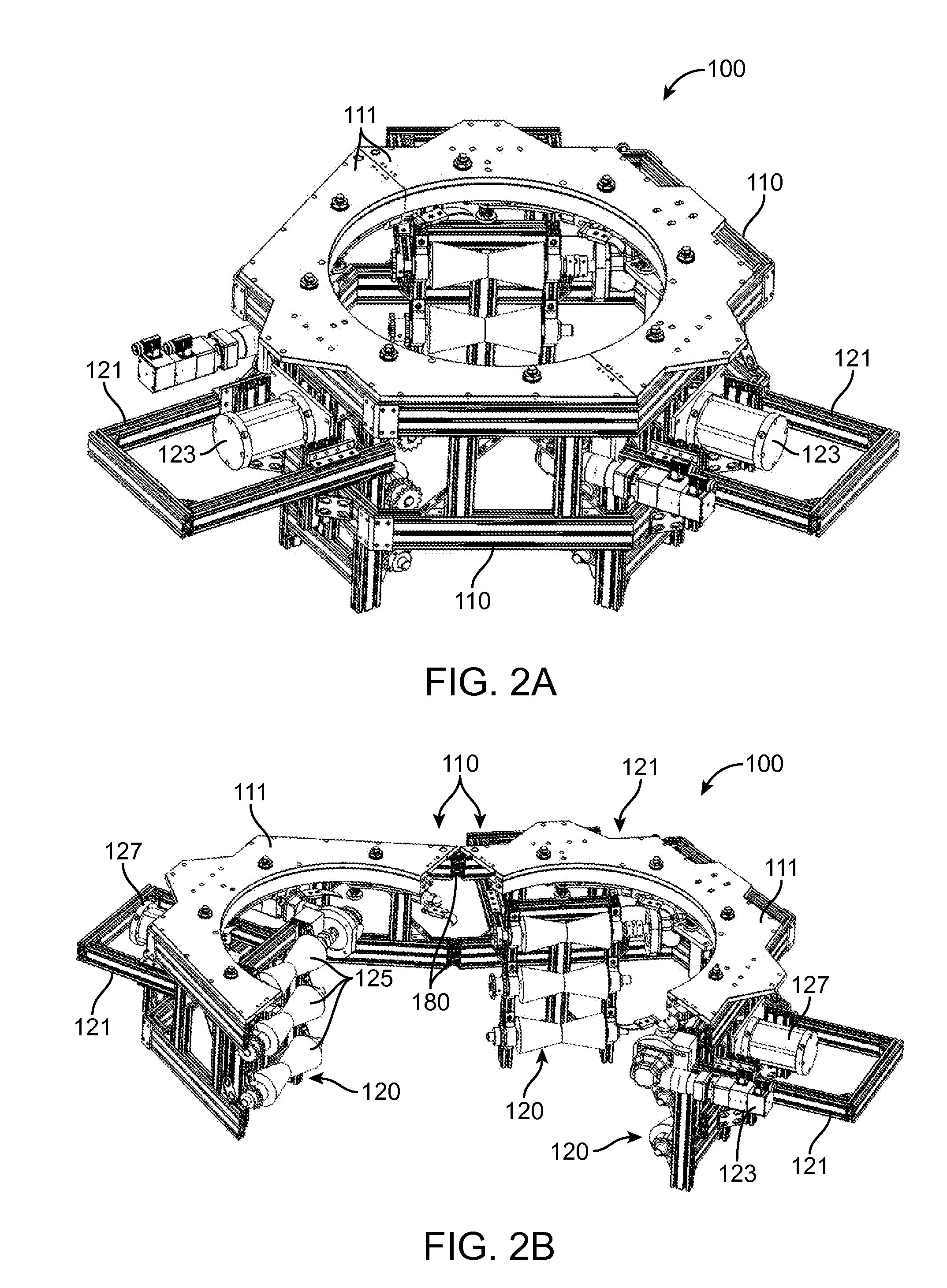Multi-axis controlled self-climbing tree trimmer
a tree trimmer and multi-axis technology, applied in the field of tree trimmers, can solve the problems of high labor intensity, high labor intensity, and high liability, and achieve the effects of increasing control and automation, high repeatability, and increasing safety for the operator
- Summary
- Abstract
- Description
- Claims
- Application Information
AI Technical Summary
Benefits of technology
Problems solved by technology
Method used
Image
Examples
Embodiment Construction
[0046]The invention generally provides improved methods, systems and apparatus for trimming trees. The invention is particularly advantageous for use in remotely controlled trimming of palm trees that allows trimming of the lower fronds of palm trees while the operator remains on the ground safely removed from the immediate vicinity of the tree in which the trimmed fronds fall. By providing systems with multi-axis control and improved stability and climbing capabilities, the motion of the tree trimming device and various aspect of tree trimming can be better controlled resulting in improved, more consistent tree trimming. Additionally, since the described systems can be automated, at least in part, and can be initiated or controlled remotely, trimming can be performed more safely, quickly and cost effectively when compared to conventional systems and methods.
[0047]Although embodiments of a multi-axis controlled self-climbing tree trimming system are shown and described in the accomp...
PUM
 Login to View More
Login to View More Abstract
Description
Claims
Application Information
 Login to View More
Login to View More - R&D
- Intellectual Property
- Life Sciences
- Materials
- Tech Scout
- Unparalleled Data Quality
- Higher Quality Content
- 60% Fewer Hallucinations
Browse by: Latest US Patents, China's latest patents, Technical Efficacy Thesaurus, Application Domain, Technology Topic, Popular Technical Reports.
© 2025 PatSnap. All rights reserved.Legal|Privacy policy|Modern Slavery Act Transparency Statement|Sitemap|About US| Contact US: help@patsnap.com



